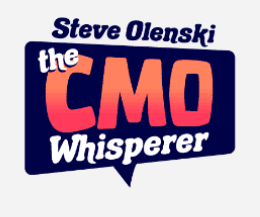Fast and Slow
The roots of a love affair
When I was a pre-teen, I read a book about Doug, an American teenager immersed in hot rod culture. The story was about Doug finding himself, but was full of descriptions of bored-out V8s and chopped and channeled old Fords, accompanied in my memory by Chuck Berry songs,
“. . . Cadillac a-rollin’ on the open road; Nothin’ outrun my V8 Ford . . . Maybeline why can’t you be true? You done started back doin’ the things you used to do.”
In a barn, Doug discovered a pristine 1948 MG TC, a British Racing Green roadster with wire wheels and saddle brown leather seats. The TC had a four cylinder engine, one third the horsepower of his friends cars and couldn’t compete on a straight away, but would lose any car on curvy roads.
Doug soon tired of drag racing preferring to go “motoring” with his new girl Deb, top down to sunshine and wind in their hair.
This began my unrequited love affair with old British sports cars. I’ve lusted after Jaguar XK-120s, MG As and Bs, Triumphs for much of my life. I drove my cousin’s Austin Healey 3000 on farm roads when I was thirteen and a friend’s Healey Sprite Midget when I was sixteen.
I have never owned any of these cars, but I’ve imagined the motoring joy of them. When I went to business school in England, I discovered the Morgan Car Company, which has been building cars like these continuously since the 1930s. The car in the bottom right of the picture above is a 1957 model, but they build a car that looks exactly like that today.
Reportedly the stiff suspension and ash wood body frame makes a Morgan an uncomfortable ride, but the light-weight aluminum body makes even the four cylinder quite quick.
People want fast cars and so Morgan obliged. They introduced the Plus 8 in 1968 with 4.5 liter Rover V8, and neck-snapping acceleration. Mick Jagger owned one. In 2000 Morgan produced the Aero 8 pictured in the upper left. The Aero even looks fast, but it leaves me cold. I think it might create the g-force face bending of astronaut centrifuge training, not exactly a “happy motoring” experience.
Most guys want the “fast” driving experience. I fantasize about the “slow” experience.
Let’s be clear. I drive ten miles-per-hour over the speed limit on interstates and use Ez-Pass for tolls like everyone else. I don’t want to return to before President Dwight D. Eisenhower built GM president Will Durant’s plan for a “network of highways stretching from sea to sea.” I do fondly remember country road drives reading Burma Shave signs.
Is faster better?
What prompted this fast-slow rumination?
My LinkedIn and BizCatalyst 360 connection Charlotte Wittenkamp shared an essay by Rory Sutherland, entitled “Are We Too Impatient to Be Intelligent?” Mr. Sutherland is the former creative director of U.K. Ogilvy & Mather, an advertising agency part of the WPP marketing conglomerate.
Mr. Sutherland now runs Ogilvy Consulting, which applies human behavioral science to business problems. His essay humorously makes the point that the default criterion for Innovation has become speed, even though that might not be what the customer wants.
Fast train schedules, bullet trains, even faster non-stop flights, instant email, Amazon same day delivery, quicken our lives unnecessarily – Don’t order a Guiness, it takes forever to pour. “Some things are worth waiting for,” he quotes the Ogilvy Guiness ad to drive home his point,.
This got me thinking. Is this a conspiracy? Or is this the way humans are wired?
In his book Thinking Fast and Thinking Slow, Daniel Kahneman posits that human brains have two systems of processing thoughts.
- System 1 is autopilot, subconscious thought used 90% of the time. It makes decisions and takes actions we have done before. It recognizes patterns and gambles on the frequency those patterns have been seen before. It is incredibly fast, like an algorithm.
- System 2 is focused, conscious thought. It is very powerful, but slow. It can only do one thing at a time.
When people say they’re good at multitasking, their skill is switch-tasking, moving rapidly between System 1 & 2, and, yes, some people are better at that, but most of us just think we are good at it.
Automobile, air traffic control accidents, chemical or oil spills and explosions are frequently caused by someone whose brain was in System 1 when it should have been in System 2. Someone was thinking fast when they should have been thinking slow.
Artificial Intelligence (AI) will save us time
Sutherland says that we don’t always actually want efficiency. He suggests that AI, which is being built on the speed and efficiency model might be trained to slow down, give us a series of suggestions for a trip to Greece over a two month period allowing for contemplation, discussion.
Google, Amazon Ads, LinkedIn, and my writing software is constantly popping up a dialogue box, “Would you like to use AI to write this?” Mentally I answer. “NO DAMMIT! I’M TRYING TO BECOME A WRITER.” (This is sometimes my out loud voice, according to my wife.)
Speed and efficiency rarely help learn a skill. It’s why when I’m woodcarving, I don’t use power tools. I want to keep the digits I have.
In my late thirties I decided to run a marathon. I had been running twenty-five seven-minute miles a week for about ten years, but never more than five miles at one time. I just started doubling my long runs at the same pace. I hurt myself.
A fellow runner said “Alan, remember LSD!”
“I don’t do that anymore and I am NOT going to start again.”
“No man. Long Slow Distance. Reduce your speed to run longer. A nine minute mile pace for your first marathon is quite respectable.”
Since the Industrial Revolution humans have focused on the relationship between speed and cost. Faster is better, because the more quantity you can produce for the same overheads, the cheaper each unit is.
New Technology performs one function more rapidly. GPS gets you from point A to point B faster than maps, but it doesn’t show you what else you might see along the way. Remember AAA Triptiks, that told you attractions at every exit you pass? AAA still makes Triptiks, but very few members order them.
There is an inverse relationship between quality and speed. A designer once told me, “Good, fast and cheap. Pick any two. If it’s fast and cheap, it won’t be good. If it’s good and cheap it won’t be fast. If it’s good and fast, it won’t be cheap.”
Some activities benefit from going slow: eating, customer service, international diplomacy, research, sex, weight loss, learning, and any art or craft. With thinking and editing time, this little post took longer than I’d like, but I am still learning to write.
Gustav Stickley, the Arts & Crafts designer, embossed on the copper fireplace hood at his home in Morris Plains, NJ:
“The Lyf so short, the craft so long to lerne.”
Slow down. Feel the sun on your face and the wind in your hair. Happy motoring.
The post Fast and Slow appeared first on Wisdom from Unusual Places.
Originally Published on https://wisdomfromunusualplaces.com/blog/

























